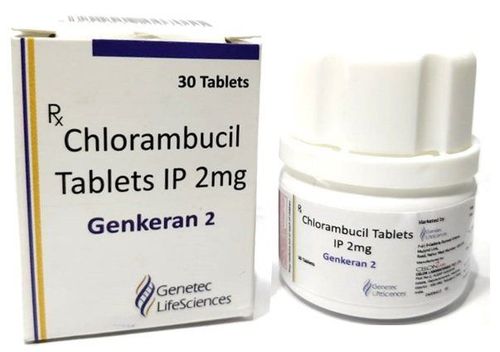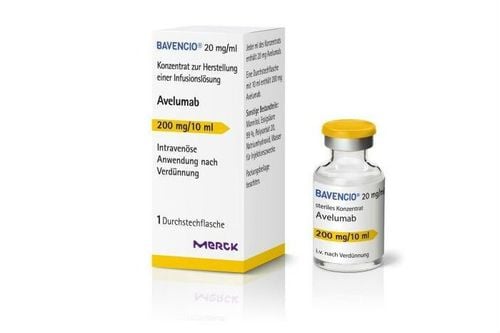This is an automatically translated article.
Belapzo belongs to the group of drugs used to treat cancer and contains Bendamustine, which is used intravenously. Belapzo is indicated for the treatment of chronic Lymphocytic leukemia and B-cell non-Hodgkin's lymphoma in patients already receiving other therapies. However, before using Belapzo, patients need to learn carefully and follow the doctor's instructions.
1. Uses of Belapzo in the treatment of diseases
The drug Belapzo contains the ingredient Bendamustine, which belongs to the group of drugs indicated in the treatment of cancer quite popular today. The use of Belapzo is prescribed and supervised by a specialist oncologist for treatment.The drug has a mechanism of action that helps to hinder the growth of cancer cells, and eventually these cells will also be destroyed by the body.
Belapzo is indicated in the case of patients with chronic lymphocytic leukemia and non-Hodgkin lymphoma.
However, the drug Belapzo may be contraindicated in case the patient has a hypersensitivity reaction to the drug's ingredients, or the patient is in the stage of pregnancy or lactation.
2. How to use Belapzo
The drug Belapzo is prepared in the form of a solution with a concentration of 100mg / 4ml and used by intravenous injection. Depending on the specific case, the doctor will prescribe a different dose.2.1. Use of Belapzo for chronic lymphocytic leukemia
Dosage of Belapzo applied to this case is usually recommended 100mg/m2 intravenously over a period of 30 minutes on days 1 and 2 of a 28-day cycle and up to a maximum of 6 cycles. Belapzo should be considered deferred if the patient develops grade 4 hematological toxicity or grade 2 toxicity or higher. When the hematological toxicity has recovered to grade 1 and the blood count has improved, the drug Belapzo can be restarted according to the doctor's prescription. And now the doctor can reduce the dose if possible. Dose adjustment in patients with hematologic toxicity is usually made with grade 3 toxicity or higher and the dose of Belapzo is reduced to 50 mg/m2 on days 1 and 2 of each cycle. If grade 3 or higher toxicity recurs or reduce dose to 25mg/m2 on days 1 and 2 of the cycle. Dose adjustment in patients with non-hematological toxicity of grade 3 or higher toxicity can reduce the dose to 50 mg/m2. And then the doctor may prescribe an increase in the dose in subsequent cycles.2.2. Use of Belapzo in the treatment of non-Hodgkin lymphoma
The drug is recommended 120mg/m2 intravenously over a 60-minute period on days 1 and 2 of a 21-day cycle, and for a maximum of 8 cycles. In the case of patients with grade 4 hematological toxicity or grade 2 toxicity or higher, it may be considered to delay cancer treatment with Belapzo. When the hematological toxicity has recovered to grade 1 and the blood count has improved, the drug Belapzo can be restarted according to the doctor's prescription. Your doctor may reduce your dose at this point if possible. Dose adjustment for patients with hematologic toxicity is usually done with grade 4 toxicity or higher and the dose of Belapzo is reduced to 90 mg/m2 on days 1 and 2 of each cycle. If grade 4 toxicity recurs or reduce dose to 60mg/m2 on days 1 and 2 of the cycle. Dose adjustment in the case of patients with non-hematological toxicity of grade 3 or higher toxicity can reduce the dose to 90mg/m2. If grade 3 or higher toxicity recurs, reduce the dose of Belapzo to 60mg/m2 And then the doctor may order an increase in the dose in subsequent cycles.3. Unwanted side effects and some notes when using Belapzo
During treatment with Belapzo, there may be some unwanted side effects such as:Bone marrow failure: Belapzo drug can cause severe myelosuppression in grades 3 and 4 in about 98% of patients with lymphoma. non-Hodgkin . Therefore, during treatment with Belapzo, the patient may be prescribed to monitor the total number of white blood cells, platelets, neutrophils and hemoglobin on a regular basis. Infection: Patients easily get pneumonia, sepsis, hepatitis, septic shock, and even death when using Belapzo. Therefore, before, during and after treatment with Belapzo, patients need to monitor their body's indicators regularly to promptly detect abnormal signs. Furthermore, the drug Belapzo may put the patient at risk of reactivation of infections in the body such as hepatitis B, cytomegalovirus infection, herpes zoster,... Anaphylactoid and infusion reactions may occur. when using the drug Belapzo with manifestations such as fever, chills, rash, itching. Patients at this time need to monitor the clinical condition and if necessary, stop using the drug to limit anaphylactic reactions. Tumor lysis syndrome in patients using the drug Belapzo can lead to acute kidney failure or death if not treated early. Skin reactions when using Belapzo may occur Stevens-Johnson syndrome, toxic epidermal necrolysis, eosinophilia,... Hepatotoxicity causes serious liver damage when used. Use Belapzo.
Please dial HOTLINE for more information or register for an appointment HERE. Download MyVinmec app to make appointments faster and to manage your bookings easily.













